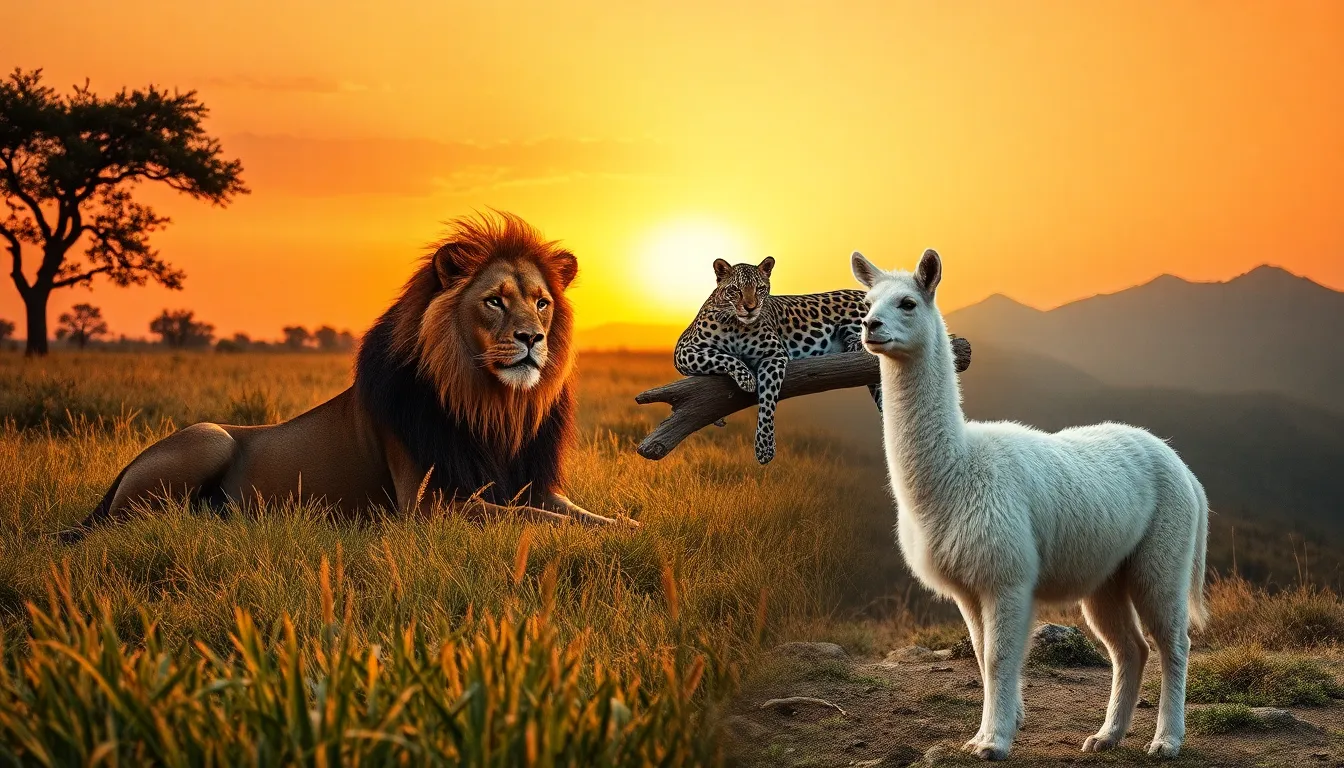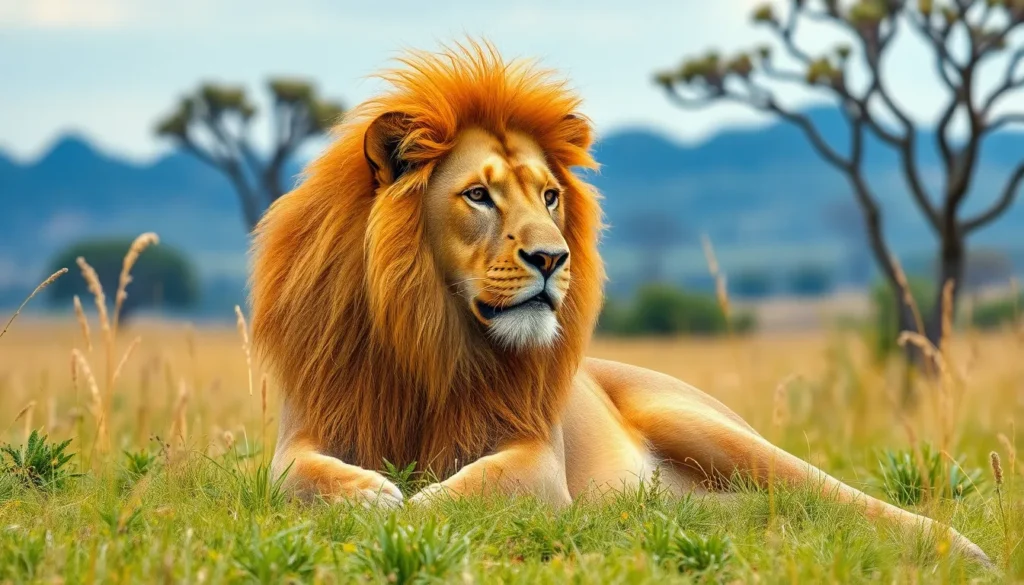Table of Contents
ToggleWhen it comes to the animal kingdom, some letters pack more punch than others. Take the letter “L” for example. It’s not just a letter; it’s the gateway to a world of fascinating creatures that might just surprise you. From majestic beasts to quirky critters, the animal kingdom has a lot to offer, and “L” is no exception.
Overview of Animals Starting With L
Lemurs represent one of the most well-known animals starting with the letter L. These primates inhabit Madagascar and display remarkable social structures. Another notable example is the lion, a symbol of strength and courage, found in various African habitats.
Lizards encompass a wide range of species, including chameleons, geckos, and iguanas. These reptiles exhibit fascinating adaptations like color changing and tail regeneration. Lobsters, despite their oceanic home, also begin with L. They play a crucial role in marine ecosystems and serve as a popular seafood choice.
Among the avian species, the loon stands out with its distinctive calls and striking appearance. They thrive in freshwater lakes across North America. Similarly, the ladybug, often regarded as a garden icon, contributes to pest control by feeding on aphids.
Lynxes, recognizable by their tufted ears and short tails, inhabit various regions in North America, Europe, and Asia. Their elusive nature makes them less frequently observed. Lastly, the langur is a type of monkey known for their expressive faces and social behavior, primarily found in South Asia.
Each of these animals illustrates the rich diversity within the animal kingdom. Exploring these creatures offers insight into their unique adaptations and roles within their ecosystems.
Popular Animals That Start With L

Exploring popular animals that start with the letter “L” reveals a range of remarkable species, each with unique characteristics.
Lion
Lions symbolize strength and courage within the animal kingdom. They live in groups called prides, composed of related females and a few dominant males. These majestic creatures inhabit grasslands and savannas across Africa, relying on teamwork for hunting. Social interactions play a crucial role in their survival, as lions communicate through vocalizations and body language. Their impressive manes signify maturity and health, attracting potential mates. Each year, they face challenges from habitat loss and poaching, making conservation efforts essential for sustaining their populations.
Leopard
Leopards exemplify adaptability and stealth in various habitats. They inhabit diverse environments, including forests, savannas, and mountainous regions across Africa and parts of Asia. Known for their distinctive spotted coats, leopards excel at camouflage, allowing them to stalk prey effectively. Unlike lions, leopards tend to be solitary animals, marking territories to maintain space from other leopards. Their diet includes small to medium-sized animals, showcasing their opportunistic feeding habits. Due to habitat destruction and hunting pressure, leopards experience population declines, highlighting the need for protective measures.
Llama
Llamas are well-known domesticated animals originating from South America. They serve multiple purposes for human communities, including packing and wool production. Sociable and intelligent, llamas form strong bonds within groups, communicating through various sounds and body postures. Adapted to high altitudes, llamas thrive in mountainous regions like the Andes. These gentle creatures demonstrate a calm demeanor, often making them suitable companions for hikers and outdoor activities. As a result, their significance extends beyond utility, embodying cultural ties and historical importance for indigenous populations.
Lesser-Known Animals Starting With L
This section explores some lesser-known animals that start with the letter “L,” highlighting their unique characteristics and ecological importance.
Lemur
Lemurs stand out as Madagascar’s iconic primates. These social creatures demonstrate complex group behaviors, living in matriarchal societies. Known for their large eyes and distinct vocalizations, lemurs rely heavily on their keen sense of smell. They mainly consume fruits, leaves, and flowers, showcasing their role in seed dispersal. Various species like the ring-tailed lemur and the indri add to their diverse adaptations. Conservation efforts focus on preserving their habitats, which are threatened by deforestation and climate change.
Lizard
Lizards exhibit astounding diversity across various ecosystems. This group includes the chameleon, known for its color-changing abilities, and the gecko, recognized for its climbing skills and vocalizations. Some lizards, like the horned toad, showcase remarkable adaptations such as camouflage and defensive mechanisms. Typically, they inhabit deserts, forests, and grasslands, contributing to their ecosystems as both predators and prey. They regulate insect populations, demonstrating their vital role in the food chain. Habitat destruction and climate change pose significant threats to many lizard species.
Lynx
Lynxes represent a unique family of wild cats, primarily found in Europe, Asia, and North America. Characterized by tufted ears and short tails, these elusive predators rely on their exceptional hearing to locate prey. Typically, they hunt small mammals, such as hares and rodents, which helps maintain ecological balance in their habitats. The Canada lynx, for example, thrives in boreal forests, while the Eurasian lynx occupies a range of forested zones across its range. Threats such as habitat fragmentation and poaching impact their populations, highlighting the need for ongoing conservation initiatives.
Interesting Facts About Animals That Start With L
Lemurs, native to Madagascar, exhibit complex social behaviors and unique adaptations. These small primates thrive in cooperative groups, showcasing intricate relationships within their communities. Lions, the iconic apex predators, live in social structures known as prides. Each pride usually consists of related females, their offspring, and a few males, working together for hunting and protection.
Leopards, highly adaptable big cats, demonstrate remarkable stealth during hunts. Their ability to climb and hide helps them evade both prey and predators, ensuring survival in various habitats. Llamas, domesticated animals in South America, provide support to local communities through their wool and as pack animals. With social and gentle natures, they play an integral role in Andean culture.
Lizards represent a vast group, displaying incredible diversity across different ecosystems. Some species can change colors for camouflage or temperature regulation, while others regenerate lost tails as a defensive mechanism. Lobsters, essential members of marine ecosystems, contribute significantly to oceanic health. Their burrowing activities aerate the seabed, benefiting marine flora.
Loons, known for their haunting calls, reside in lakes and rivers across North America. These birds undertake long migrations, impressively adapting to seasonal changes. Ladybugs, often recognized for their bright colors, act as natural pest controllers in gardens. Their presence reduces harmful insect populations, supporting ecological balance.
Lynxes, elusive wild cats, inhabit forests across parts of North America, Europe, and Asia. Their sharp hearing allows them to detect prey in dense environments. Each of these animals starting with “L” not only fascinates but also highlights the rich biodiversity within the animal kingdom.
The exploration of animals starting with “L” reveals a captivating array of species that enrich the animal kingdom. Each creature showcases unique traits and ecological importance. From the social dynamics of lemurs to the majestic presence of lions, these animals highlight the intricate web of life on Earth.
Understanding their roles not only fosters appreciation but also emphasizes the need for conservation efforts. Protecting these diverse species ensures the health of ecosystems and the continuation of their remarkable stories. As one delves deeper into the world of “L” animals, the wonder and complexity of nature become increasingly evident.




